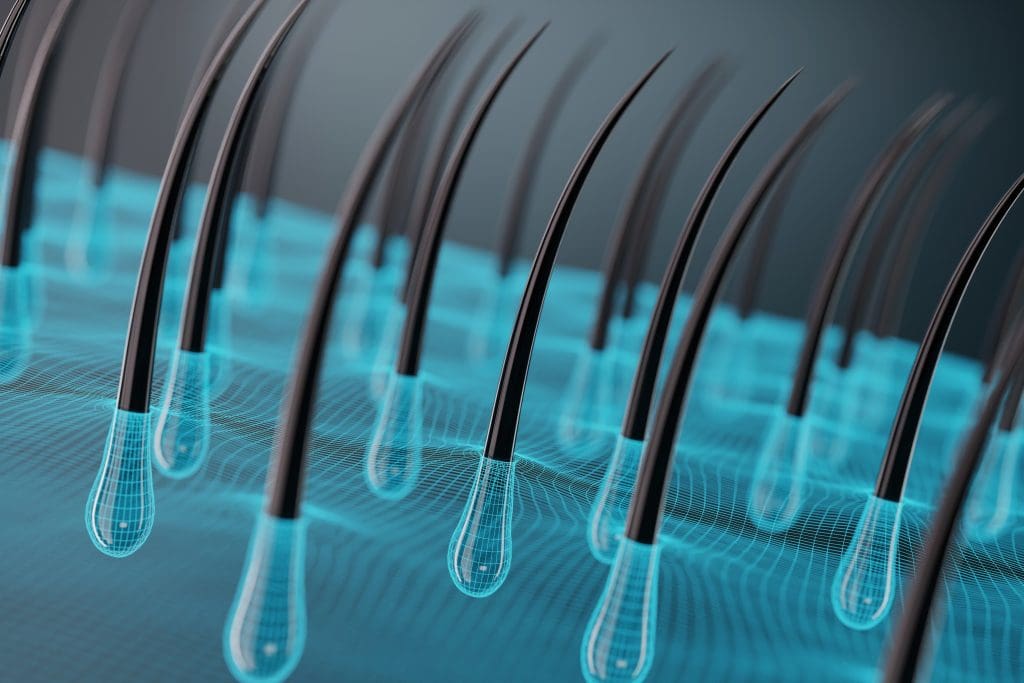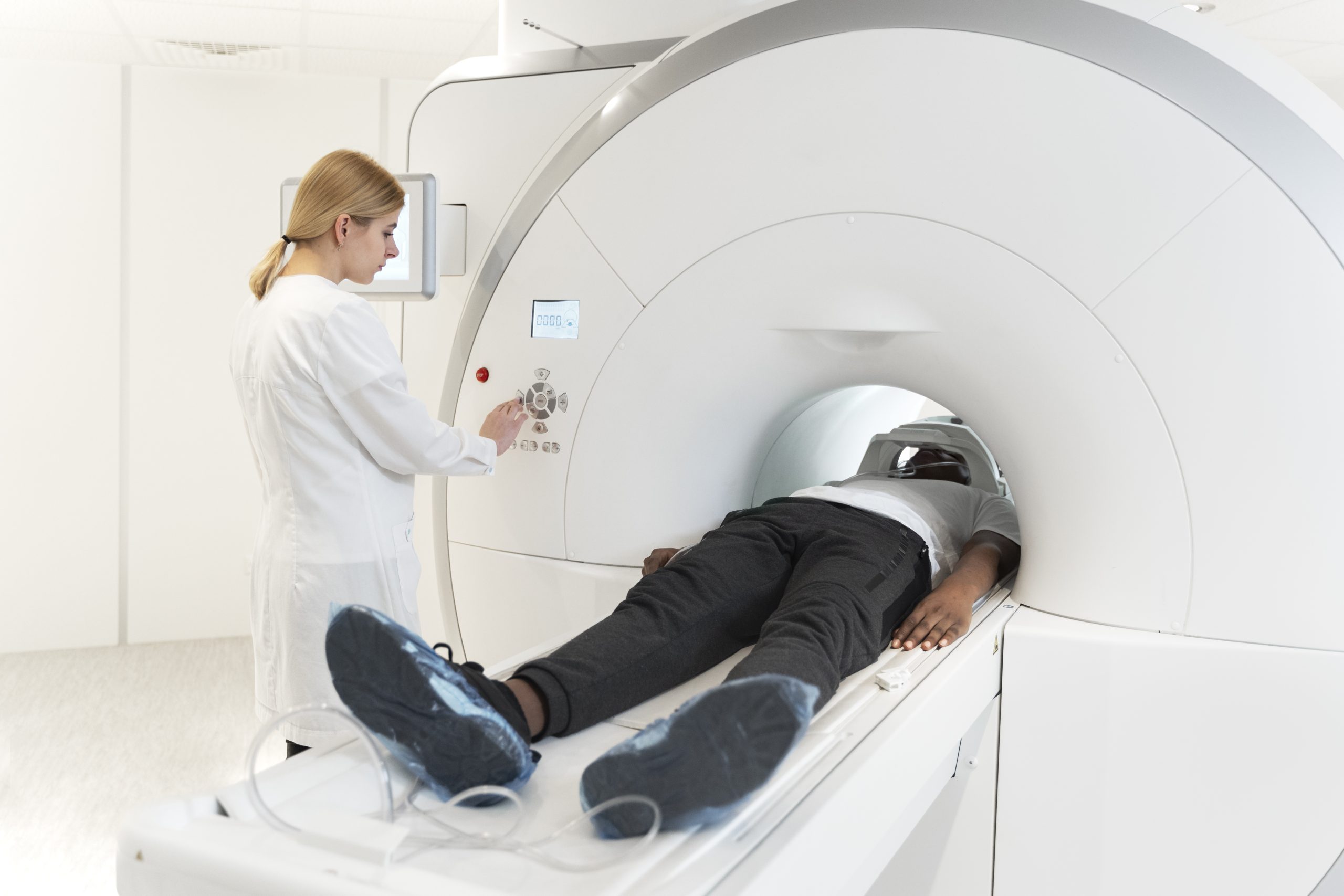Last Updated on September 17, 2025 by Saadet Demir
stem cells and hair
A staggering 80 million Americans suffer from hair loss, with nearly 40% of them being women. This can cause a lot of emotional pain. New medical science brings hope, with stem cell therapy as a promising option. The science behind hair regrowth with stem cells is amazing. It uses follicle stem cells to make new hair follicles and shows how stem cells regrow hair effectively. This could change how we treat hair loss.
Key Takeaways
- Hair loss affects a significant portion of the American population.
- Stem cell therapy is being explored as a possible treatment for hair loss.
- Follicle stem cells are key in growing new hair.
- This therapy aims to create new hair follicles for natural growth.
- Stem cell therapy could be a game-changer for hair loss.
Understanding Hair Loss: Causes and Prevalence

hair loss prevalence
Hair loss, or alopecia, affects millions globally. It’s a big issue needing deep understanding and good treatments. The International Society of Hair Restoration Surgery says about 35 million American men and 21 million American women face hair loss.
Common Types of Hair Loss
Hair loss shows up in many ways. Androgenetic alopecia, or male/female pattern baldness, is the most common. It causes hair to thin gradually, mainly on the top and crown.
Alopecia areata is another common type. It’s an autoimmune disease causing patchy hair loss. Other types include:
- Telogen effluvium, where stress or hormonal changes lead to too much hair shedding.
- Alopecia totalis, where hair falls off completely on the scalp.
- Alopecia universalis, where hair is lost all over the body.
The Psychological Impact of Hair Loss
Hair loss deeply affects a person’s self-esteem and confidence. It can make someone feel insecure, anxious, and depressed. The emotional pain from hair loss is real and needs to be treated.
People with hair loss might:
- Feel embarrassed about how they look.
- Get anxious or avoid social situations.
- Feel less confident in themselves.
Why Traditional Treatments Often Fall Short
Old treatments like minoxidil and finasteride are common but have their limits. Minoxidil can slow hair loss but doesn’t work for everyone. Finasteride helps some men but is not safe for women, pregnant or not.
This shows we need new, better ways to treat hair loss. Regenerative therapy and stem cell treatments are being looked into for their hair growth benefits.
The Science of Hair Growth and Follicle Cycles
The activation of stem cells for hair growth is based on complex biological processes.
Hair growth is a complex process involving cells and regulatory mechanisms. It’s not just a static state but a dynamic cycle. This cycle requires the teamwork of various cell types in the hair follicle.
The Hair Growth Cycle Explained
The hair growth cycle has three main phases: anagen, catagen, and telogen. The anagen phase is when hair grows fast. It can last from 2 to 6 years, depending on several factors.
The catagen phase is a short transition lasting about 2-3 weeks. During this time, hair growth stops, and the follicle shrinks. The telogen phase, or resting phase, lasts 3-4 months. After this, the hair falls out, and the cycle starts again.
What Disrupts Normal Hair Growth
Many factors can upset the hair growth cycle, causing hair loss or thinning. Hormonal imbalances, like too much dihydrotestosterone (DHT), can harm hair growth. DHT makes hair follicles shrink, leading to thinner, shorter hairs. Stress, poor nutrition, and certain health issues also play a role.
The Role of Follicle Miniaturization
Follicle miniaturization is when hair follicles shrink, causing finer, shorter hairs. This is common in androgenetic alopecia, or male/female pattern baldness. Knowing about follicle miniaturization helps in finding treatments to keep or grow hair.
Stem cells are key in the hair growth cycle, mainly in the hair follicle. Hair follicle stem cells help regenerate the follicle in each cycle. Keeping these stem cells active is essential for healthy hair growth.
What Are Stem Cells and How Do They Work?
stem cells
Stem cells are special cells that can turn into different types of cells. They play a big role in fixing and growing tissues. These cells are undifferentiated, meaning they haven’t become specific cells like skin or muscle cells yet.
Defining Stem Cells and Their Properties
Stem cells have two key features: self-renewal and differentiation. Self-renewal means they can make more of themselves. Differentiation is when they turn into specific cells. This lets them help the body fix itself and keep tissues healthy.
, the National Institutes of Health Director, said stem cells could change medicine. They could help treat many diseases and injuries. This is because they can grow new tissues, which is key for fixing hair loss.
Different Types of Stem Cells
There are many kinds of stem cells, each with its own uses. Adipose-derived stem cells come from fat and can help fix and grow tissues. Bone marrow-derived stem cells have been used in medicine for a long time, mainly in bone marrow transplants.
- Adipose-derived stem cells: These cells are from fat and are being studied for their healing powers.
- Bone marrow-derived stem cells: Used for years in medicine, they’re great for blood disorders.
- Induced pluripotent stem cells (iPSCs): Made from adult cells, they can become almost any cell type. They’re a big deal for research and maybe treatments.
How Stem Cells Contribute to Tissue Regeneration
Stem cells help fix tissues in a few ways. They can turn into the cells needed to fix damaged areas. They also release signals that help healing start. For example, they might help grow new hair follicles, which could treat baldness.
Stem cells have a lot of promise for treating many conditions, including hair loss. As we learn more about them, we’ll find new ways to use them to fix and grow tissues.
Stem Cells and Hair: The Biological Connection
hair follicle stem cells
Stem cells are key to growing new hair. Knowing how they work helps us fight hair loss. The link between stem cells and hair is complex, involving many steps that control hair growth.
Hair Follicle Stem Cells: Nature’s Hair Regenerators
Hair follicle stem cells live in the hair follicle bulge area. They are vital for hair to grow back throughout our lives. Hair follicle stem cells help hair grow and fall out, keeping the cycle going.
The Stem Cell Niche in Hair Follicles
The stem cell niche is the special area around hair follicle stem cells. It gives them the signals they need to grow hair. This niche has different cells that work together to keep stem cells healthy.
How Aging Affects Hair Follicle Stem Cells
As we get older, hair follicle stem cells change. They grow slower and don’t work as well. This is why we lose more hair with age. Finding ways to help these stem cells is important for fighting age-related hair loss.
The Role of Stem Cells in Hair Cycling
Stem cells are essential for hair growth. They go through phases: growth, transition, and rest. In the growth phase, they make new hair cells. The changes between these phases are controlled by many signals.
| Phase | Description | The activation of stem cells for hair growth is based on complex biological processes. |
| Anagen | Active growth phase | High proliferation and differentiation |
| Catagen | Transition phase | Reduced activity |
| Telogen | Resting phase | Low activity |
Types of Stem Cells Used in Hair Restoration
The activation of stem cells for hair growth is based on complex biological processes.
Stem cells are changing how we treat hair loss. Many types are being studied for their benefits. Each has its own strengths and uses.
Follicular Stem Cells
Follicular stem cells live in the hair follicle and help it grow. They are key in hair restoration research. These cells can be activated to grow more hair, which is exciting for treating baldness.
Adipose-Derived Stem Cells
Adipose-derived stem cells come from fat and might help grow hair. They can turn into different cell types, including those that help hair follicles. They could improve the scalp and blood flow to hair follicles.
Bone Marrow-Derived Stem Cells
Bone marrow stem cells are also being studied for hair growth. They can turn into many cell types and help grow hair follicles. They also have anti-inflammatory effects, which is good for hair growth.
Induced Pluripotent Stem Cells for Hair Research
Induced pluripotent stem cells are made from adult cells and can become many cell types. iPSCs are a big deal for hair research. They let scientists study hair growth and test treatments in a lab. They’re a promising area for new hair treatments.
There are many stem cell types being looked at for hair loss. This shows how complex and promising this field is. As research goes on, we’ll learn more about the best ways to use stem cells for hair loss.
Current Stem Cell Treatments for Hair Loss
The activation of stem cells for hair growth is based on complex biological processes.
Stem cell therapy is a new hope for hair loss. It uses regenerative medicine to create innovative treatments. These treatments aim to help those with alopecia.
Stem Cell Scalp Injections
Stem cell scalp injections put stem cells directly into the scalp. This method tries to wake up dormant hair follicles. It also aims to grow new hair.
Benefits: It’s a minimally invasive method. It has the chance to significantly grow hair.
PRP with Stem Cell Therapy
PRP with stem cell therapy combines two powerful treatments. PRP comes from the patient’s blood. It has growth factors that help hair grow when mixed with stem cells.
- The activation of stem cells for hair growth is based on complex biological processes.
- Improves scalp health
- Enhances the effectiveness of stem cell therapy
Exosome Therapy
Exosome therapy uses exosomes from stem cells to grow hair. Exosomes carry signaling molecules. These molecules can start hair growth.
Advantages: It’s non-invasive. It can grow hair without injecting stem cells directly.
Stem Cell-Enriched Hair Transplants
This method adds stem cells to hair transplants. It makes the transplanted hair follicles more likely to survive. It also improves the transplant’s results.
| Treatment | Description | Benefits |
| Stem Cell Scalp Injections | Direct injection of stem cells into the scalp. | Minimally invasive, promotes hair regrowth. |
| PRP with Stem Cell Therapy | Combination of PRP and stem cell therapy. | Stimulates hair growth, improves scalp health. |
| Exosome Therapy | Use of exosomes derived from stem cells. | Non-invasive, promotes hair regrowth. |
| Stem Cell-Enriched Hair Transplants | Enriching hair transplants with stem cells. | Improves survival rate of transplanted follicles. |
The Science Behind The activation of stem cells for hair growth is based on complex biological processes.
The activation of stem cells for hair growth is based on complex biological processes.
The activation of stem cells for hair growth is based on complex biological processes. It involves many cell types, signaling pathways, and growth factors. This process is key to regrowing hair.
Signaling Pathways in Hair Follicle Regeneration
Signaling pathways are vital for hair follicle growth. The Wnt/β-catenin pathway is a major player in hair development. Other important pathways include Sonic Hedgehog (Shh) and Notch signaling.
These pathways work together to control hair growth. Understanding them is essential for creating effective hair loss treatments.
Growth Factors and Their Role
Growth factors are proteins that help cells grow and survive. In hair growth, VEGF and FGF are key. VEGF helps create new blood vessels, essential for hair growth.
FGF promotes hair follicle cell growth. It’s also involved in the hair growth cycle. Using growth factors topically or through injections is being explored as a hair growth therapy.
Creating the Optimal Environment for Stem Cell Function
For hair regeneration, creating the right environment is key. This means having the right growth factors and a good scalp microenvironment. Oxygen, nutrients, and no harmful signals are important.
Using LLLT and PRP therapy can help. They aim to improve the scalp environment and boost stem cell activity.
The activation of stem cells for hair growth is based on complex biological processes.
Topical treatments are a non-invasive way to activate stem cells for hair growth. They include minoxidil and growth factors. These can penetrate the scalp and stimulate stem cells.
Creating effective topical treatments requires understanding stem cell activation and hair growth. By targeting specific pathways and improving the scalp environment, these treatments can help regrow hair and improve scalp health.
Clinical Evidence: Do Stem Cells Actually Regrow Hair?
Stem cell therapy is seen as a hopeful solution for hair loss. Many studies have looked into its effectiveness. This growing evidence has made many in the medical field very interested.
Review of Major Clinical Studies
Several key studies have explored stem cell therapy for hair growth. A study in the Journal of Clinical and Aesthetic Dermatology showed it improved hair density and thickness in patients with androgenetic alopecia.
Another study at a top research center found that stem cells from fat could help hair grow. They did this by waking up dormant hair follicles.
Success Rates and Limitations
Even though studies show promise, it’s important to know the success rates and limits of stem cell therapy for hair loss. Success depends on the method used, who gets the treatment, and why they lost hair.
A meta-analysis of trials showed stem cell therapy can increase hair density by 20-30% in 6-12 months. But, results can differ a lot, and some people might not see as much improvement.
Comparing Results Across Different Techniques
There are different ways to use stem cell therapy, each with its own results. For example, injecting stem cells into the scalp can help hair grow back. Mixing stem cells with PRP (Platelet-rich Plasma) therapy can lead to even better results because of the added growth factors.
A study compared different methods and found that exosome therapy might be more effective. This method uses tiny vesicles from stem cells to target hair growth more precisely.
Patient Selection Factors Affecting Outcomes
Who gets treated with stem cells is very important for success. The stage of hair loss, why it happened, and the patient’s overall health can all affect how well the treatment works.
People with early-stage androgenetic alopecia tend to do better with stem cell therapy. Those with a healthy scalp and little scarring also have a better chance of success.
Hair Cloning and Follicle Regeneration: The Cutting Edge
Stem cell technology has led to new hair cloning methods. Hair cloning, or hair multiplication, aims to grow more hair follicles. This technology could change how we treat baldness and thinning hair.
The Concept of Hair Multiplication
Hair multiplication starts with taking a few hair follicles from a person. Then, stem cells are isolated and grown in a lab. These cells are put back into the scalp to grow new hair follicles.
Current Research in Hair Cloning
Many groups are working on hair cloning. They’re trying to make stem cell growth better and ensure new hair follicles work well. Early tests show good results, with some people seeing more hair.
Challenges and Breakthroughs
Hair cloning faces several hurdles. It needs to be safe, work well, and be affordable. But, new stem cell research is helping. This brings hair cloning closer to being a real treatment.
| Challenge | Description | Potential Solution |
| Safety and Efficacy | Ensuring the treatment is safe and effective | Rigorous clinical trials and testing |
| Scalability | Scaling up the process for larger applications | Advancements in laboratory techniques |
| Cost Reduction | Making the treatment more affordable | Economies of scale and process optimization |
Hair cloning is getting better fast. More research and development are needed. As technology improves, we’ll see better treatments for hair loss. This could change how we deal with baldness and thinning hair.
Potential Risks and Side Effects of Stem Cell Hair Treatments
Stem cell treatments might help with hair loss, but they also have risks and side effects. It’s important to know these to make good choices.
Short-Term Side Effects
Right after getting stem cell hair treatments, some people might feel redness, swelling, or pain where the shots were given. Others might itch or feel uncomfortable in the treated area. These issues are usually mild and go away in a few days.
Common short-term side effects:
- Redness at the injection site
- Swelling
- Pain or discomfort
- Itching
Long-Term Safety Concerns
There are worries about long-term safety with stem cell hair treatments. We don’t know all the possible problems yet. It’s key to keep an eye on how you feel over time.
Potential long-term risks:
- Unforeseen complications
- Long-term efficacy
- The activation of stem cells for hair growth is based on complex biological processes.
Regulatory Oversight and Patient Protection
Rules and checks are important to make sure stem cell hair treatments are safe and work well. In the U.S., the FDA makes sure these treatments follow strict rules. Make sure your treatment provider follows these rules for your safety.
Patient protection measures:
- Verify FDA compliance
- Choose experienced providers
- Understand the treatment protocol
Cost and Accessibility of Stem Cell Therapy for Hair Loss
Stem cell therapy is seen as a new hope for hair loss. Knowing its cost and how easy it is to get is key. The price is a big worry for those thinking about it.
Price Range for Different Treatments
The price of stem cell therapy for hair loss changes a lot. It depends on the treatment type, technology, and the doctor’s skill. On average, it costs between $1,000 to $5,000 per session. Some places offer deals for more than one session, making it cheaper.
Insurance Coverage Considerations
Most insurance doesn’t cover stem cell therapy for hair loss. It’s seen as a cosmetic treatment. But, some clinics have payment plans or accept special savings accounts.
Geographic Availability and Medical Tourism
Where you can get stem cell therapy for hair loss varies. Big cities usually have more options. This has led to more people traveling for cheaper treatments. But, there are risks like poor quality care and hard follow-up treatments.
Questions to Ask Before Choosing a Provider
Before getting stem cell therapy for hair loss, ask the provider some questions. Find out about their experience, the technology they use, and what results you can expect. Also, ask about the total cost and any extra fees for future treatments or visits.
The Future of Stem Cells and Hair Regeneration
New technologies in stem cell therapy are changing hair restoration. Research is moving fast, leading to new ways to fight hair loss.
Emerging Technologies and Approaches
Emerging technologies are making stem cell therapy better for hair. Gene editing and 3D bioprinting are key. They could lead to better treatments.
Gene therapy might change genes for better hair growth. This could make stem cell treatments work better.
Gene Therapy Combined with Stem Cells
Gene therapy with stem cells is a big step forward. It aims to make stem cells better at growing hair.
This could treat and prevent hair loss. It tackles the genetic causes of hair loss.
3D Bioprinting of Hair Follicles
3D bioprinting is being used for hair regeneration. It makes artificial hair follicles for transplant.
This could change how we treat hair loss. It offers a natural and lasting solution.
Timeline for New Treatments Reaching the Market
These new technologies are promising. But, we need to think about when they’ll be available. Clinical trials and approvals are needed.
As research goes on, we’ll see new hair loss treatments soon. They will bring hope to many.
Conclusion: Is Stem Cell Therapy Right for Your Hair Loss?
Stem cell therapy is a promising way to fight hair loss. But, it’s not for everyone. Different types of stem cells and treatments are being tested for hair growth.
Before trying stem cell therapy, talk to a doctor. They can check your situation and suggest the best treatment for you.
Research in hair restoration using stem cells is growing fast. The results look good, but it’s important to know the risks and benefits.
By staying updated and talking to a doctor, you can decide if stem cell therapy is right for you.
FAQ
How do I know if stem cell therapy is right for my hair loss?
To decide if stem cell therapy is right for you, talk to a qualified healthcare professional. They can assess your situation and give personalized advice.
What is the future of stem cells and hair regeneration?
The future of stem cells in hair regeneration looks promising. New technologies like gene therapy and 3D bioprinting may lead to innovative treatments. Researchers are always finding new ways to use stem cells for hair restoration.
Can stem cell therapy be used in combination with other hair restoration treatments?
Yes, stem cell therapy can be combined with other treatments. This includes PRP therapy, medications, and hair transplants. Combining treatments can improve results.
What is hair cloning, and how does it relate to stem cell therapy?
Hair cloning is a method to multiply hair follicles in a lab using stem cells. The goal is to create new follicles for transplanting. This technology is new but shows promise for hair restoration.
Are stem cell treatments for hair loss covered by insurance?
Insurance coverage for stem cell treatments for hair loss varies. It depends on the provider and treatment specifics. Some plans may cover parts of the treatment, while others may not.
What are the possible risks and side effects of stem cell hair treatments?
Possible side effects of stem cell hair treatments include redness, swelling, and itching. There are also long-term concerns like tumor formation or immune reactions.
Are stem cell treatments for hair loss effective?
The activation of stem cells for hair growth is based on complex biological processes.
What are the different types of stem cells used in hair restoration?
Different stem cells are used for hair restoration. These include follicular stem cells, adipose-derived stem cells, bone marrow-derived stem cells, and induced pluripotent stem cells.
How do stem cells contribute to hair regrowth?
Stem cells help hair grow by waking up hair follicle stem cells. These cells are key for hair cycling and growth. They also release growth factors to help hair grow better.
The activation of stem cells for hair growth is based on complex biological processes.
Stem cell therapy for hair loss uses stem cells to help hair grow. It can be done through scalp injections, PRP therapy, or exosome therapy.





